| Zeitschrift Umělec 2003/2 >> Naked in Post-soviet Armenia | Übersicht aller Ausgaben | ||||||||||||
|
|||||||||||||
Naked in Post-soviet ArmeniaZeitschrift Umělec 2003/201.02.2003 Eva Khachatrian | performance | en cs |
|||||||||||||
|
Performance art has generally played an interesting role in contemporary Armenian art. Nearly every artist here has explored this sphere for themselves. Nowadays Azat Sargsyan, also known for his frequent travel, is probably the most devoted representative of this live genre in contemporary Armenian art.
In one performance made for the show After the Wall (1999), and repeated for Sao Paolo Biennial (2002), Sargsyan fell to the ground in front of the door and became a doormat inscribed with the word WELCOME. Within the exhibitions’ context, through his lowered status, the artist identified with the Soviet Union, all of its mistakes and sins, as it attempts to make contact with civilization. This is an artist living and creating in the Soviet Union — an individual bearing all the crimes committed by this country. Such a self-critical approach by the artist grows into one of humiliation: he identifies with a doormat which somebody can choose to either walk over or use to wipe their feet on. Such was Sargsyan’s interaction with the audience. While at After the Wall visitors merely stepped over Sargsyan, in San Paolo he was injured when people actually used him as a doormat, wiping their feet on him — women’s high-heels were especially painful. All of this calls to mind the performance by the Russian action artist and performer Oleg Kulik in which the artist identifies with a dog, a dog that was cruelly treated in one performance in Russia, where it suffered a beating. In Amsterdam people came up and caressed Kulik, this “barking and attacking dog,” while also offering their assistance. Undoubtedly, Kulik’s performance is much more extreme than Sargsyan’s: an attack by exhibition visitors in one case and direct relation to people in the street in the second. However, in both performances the artists consciously initiated direct communication with the audience. In both cases, the audience became an immediate participant of the performance; and the performance results depend on the audience. The number of spectators drawn to a live performance is by its very nature limited, so many contemporary performers here are now transferring their work to other media, usually video, which can then be placed on the web. Advanced technologies are therefore capable of eternalizing the performance, depriving it of its liveliness while transferring to another sphere of media. Security concerns can also be a reason for this transfer, as the artist may not wish to make direct contact with the audience. One of the first transfers of this kind in Armenia was made by Grigor Khachatryan in a photo performance titled Manifest (1990). For the first time in the history of contemporary Armenian art, the artist showed himself standing stark naked: frontal shot, profile and backside. At that time, the appearance of an artist turning himself into the subject of the artwork scandalized the public. At one exhibition by the Artists Union titled One-by-One Work (where each member of the Union was entitled to present his or her work without a jury’s prior approval), this shameless work (as it was called by the community) was removed from the exhibition hall after a few days. For the artist, Manifest was a way to shed fears and complexes related both to his own and to the post-Soviet situation. The texts for Manifest reads: “I’m not a man, I’m Grigor Khachatryan; you are not people, you are Grigor Khachatryan’s contemporaries. Grigor Khachatryan, a name high and delightful.” According to the philosopher Vardan Jaloyan, Grigor Khachatryan does not leave the place of ideology vacant, suggesting a new kind of ideology that combats all other ideologies through its absurdity, stupidity and impossibility. Simultaneously, getting naked is considered an act of betrayal of the Homeland, “Leninist ideas” and friendship. Getting naked exposes the feeling of guilt for an uncommitted crime, expressed by the “criminal” mug-shot style of the photos (frontal shot, profile and backside) as well as by the row of chewed apples at the bottom of the image symbolizing biblical sin. Azat Sargsyan and Grigor Khachatryan are “socialist” artists, whose art was leveled against Soviet ideas. Even nowadays they continue thinking up new ways to fight against a system that no longer exists. After the breakup of the Soviet Union, this ideology was replaced by a nationalist Armenian version, and the post-Soviet generation has taken up the fight against the new national ideology. In this regard, performance art takes a special place, as nearly all the artists have engaged in this genre, creating social-political art as performance. It is worth noting, however, that Armenian art is generally full of social and political topics, and action; performance is convenient because it touches on and delivers these issues. Another artist, David Kareyan, who started his creative activity after the collapse of Soviet Union, presented his performance Sweet Repression of Ideology at the Collapse of Illusions exhibition (Yerevan, 2000). Sitting in a wheelchair, the author read Armenian national ideology, then tore some pages from the book and threw them into a large boiler, on which he was cooking some porridge. The disabled person in the wheelchair represents the disappointed individual, deceived once again; he had set his hopes on a new, democratic society. Instead, he finds himself being fed national ideology.
01.02.2003
Empfohlene Artikel
|
|||||||||||||
|
04.02.2020 10:17
Letošní 50. ročník Art Basel přilákal celkem 93 000 návštěvníků a sběratelů z 80 zemí světa. 290 prémiových galerií představilo umělecká díla od počátku 20. století až po současnost. Hlavní sektor přehlídky, tradičně v prvním patře výstavního prostoru, představil 232 předních galerií z celého světa nabízející umění nejvyšší kvality. Veletrh ukázal vzestupný trend prodeje prostřednictvím galerií jak soukromým sbírkám, tak i institucím. Kromě hlavního veletrhu stály za návštěvu i ty přidružené: Volta, Liste a Photo Basel, k tomu doprovodné programy a výstavy v místních institucích, které kvalitou daleko přesahují hranice města tj. Kunsthalle Basel, Kunstmuseum, Tinguely muzeum nebo Fondation Beyeler.
|







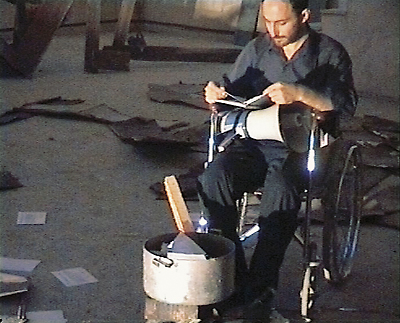







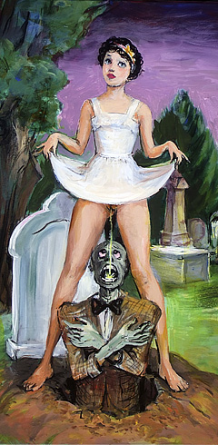











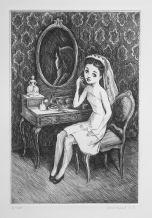
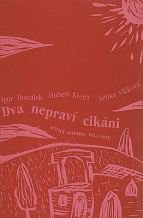
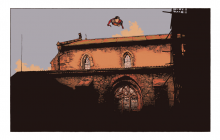
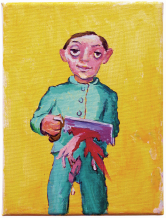


 We Are Rising National Gallery For You! Go to Kyjov by Krásná Lípa no.37.
We Are Rising National Gallery For You! Go to Kyjov by Krásná Lípa no.37.
Kommentar
Der Artikel ist bisher nicht kommentiert wordenNeuen Kommentar einfügen